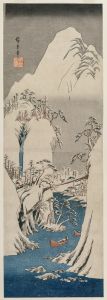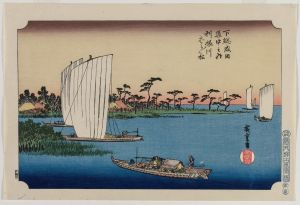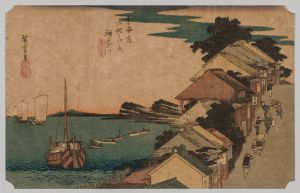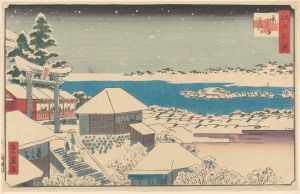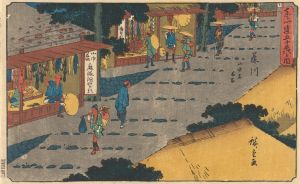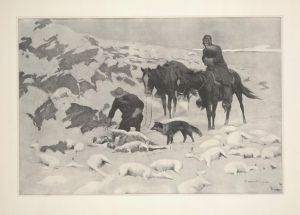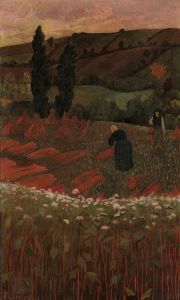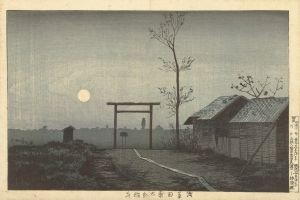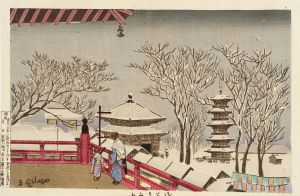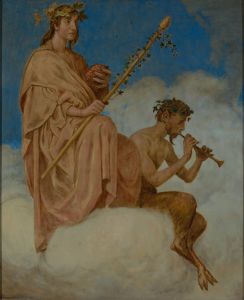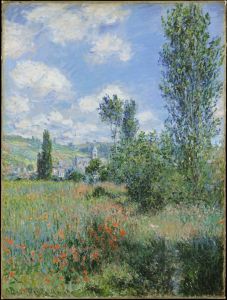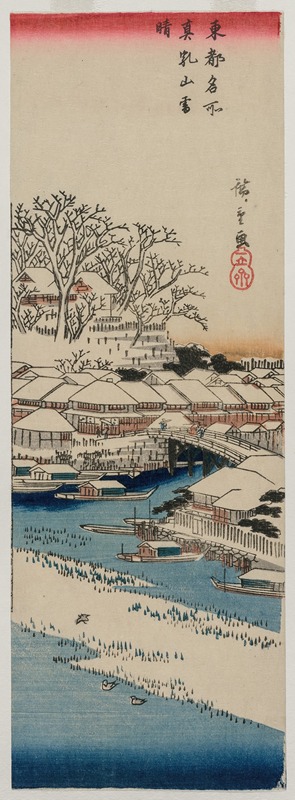
Clear Weather after Snow at Matsuchiyama, from the series Famous Places in the Eastern Capital
A hand-painted replica of Andō Hiroshige’s masterpiece Clear Weather after Snow at Matsuchiyama, from the series Famous Places in the Eastern Capital, meticulously crafted by professional artists to capture the true essence of the original. Each piece is created with museum-quality canvas and rare mineral pigments, carefully painted by experienced artists with delicate brushstrokes and rich, layered colors to perfectly recreate the texture of the original artwork. Unlike machine-printed reproductions, this hand-painted version brings the painting to life, infused with the artist’s emotions and skill in every stroke. Whether for personal collection or home decoration, it instantly elevates the artistic atmosphere of any space.
"Clear Weather after Snow at Matsuchiyama" is a woodblock print by the renowned Japanese ukiyo-e artist Andō Hiroshige. This artwork is part of the series "Famous Places in the Eastern Capital" (Tōto Meisho), which showcases various scenic spots in Edo, now known as Tokyo. Hiroshige, a master of the ukiyo-e genre, is celebrated for his ability to capture the beauty and essence of Japanese landscapes and urban scenes during the Edo period.
The print depicts Matsuchiyama, a hill located in the Asakusa district of Edo. This area is known for its scenic beauty and cultural significance, particularly the Matsuchiyama Shoden Temple, which is dedicated to the deity Kangiten. The temple is one of the oldest in Tokyo and holds a special place in the hearts of many locals and visitors. Hiroshige's depiction of Matsuchiyama after a snowfall captures the serene and tranquil atmosphere of the location, a common theme in his works.
In "Clear Weather after Snow at Matsuchiyama," Hiroshige employs his signature style, characterized by the use of vibrant colors and intricate details. The composition typically features a clear blue sky, indicative of the weather clearing after a snowfall, with the snow-covered landscape providing a stark contrast. This use of color and contrast is a hallmark of Hiroshige's work, allowing viewers to experience the crispness and clarity of the scene.
Hiroshige's ability to convey the transient beauty of nature is evident in this print. The depiction of snow, a fleeting and delicate element, is rendered with a sense of realism and delicacy that invites viewers to appreciate the ephemeral nature of the moment. This focus on capturing the impermanence of nature aligns with the broader themes of ukiyo-e art, which often emphasizes the beauty of the fleeting world.
The "Famous Places in the Eastern Capital" series, to which this print belongs, was created during a time when Edo was experiencing rapid growth and transformation. Hiroshige's works from this series serve as a visual record of the city during the late Edo period, offering insights into the cultural and social landscape of the time. His prints were highly popular among the residents of Edo and continue to be appreciated for their artistic and historical value.
Hiroshige's influence extends beyond Japan, as his works have inspired many Western artists, particularly during the Japonisme movement in the late 19th and early 20th centuries. Artists such as Vincent van Gogh and Claude Monet admired Hiroshige's compositions and use of color, incorporating elements of his style into their own works.
Overall, "Clear Weather after Snow at Matsuchiyama" exemplifies Hiroshige's mastery of the ukiyo-e art form, capturing the serene beauty of a specific moment in time while providing a glimpse into the cultural and historical context of Edo. His work continues to be celebrated for its artistic merit and its ability to transport viewers to the tranquil landscapes of 19th-century Japan.





